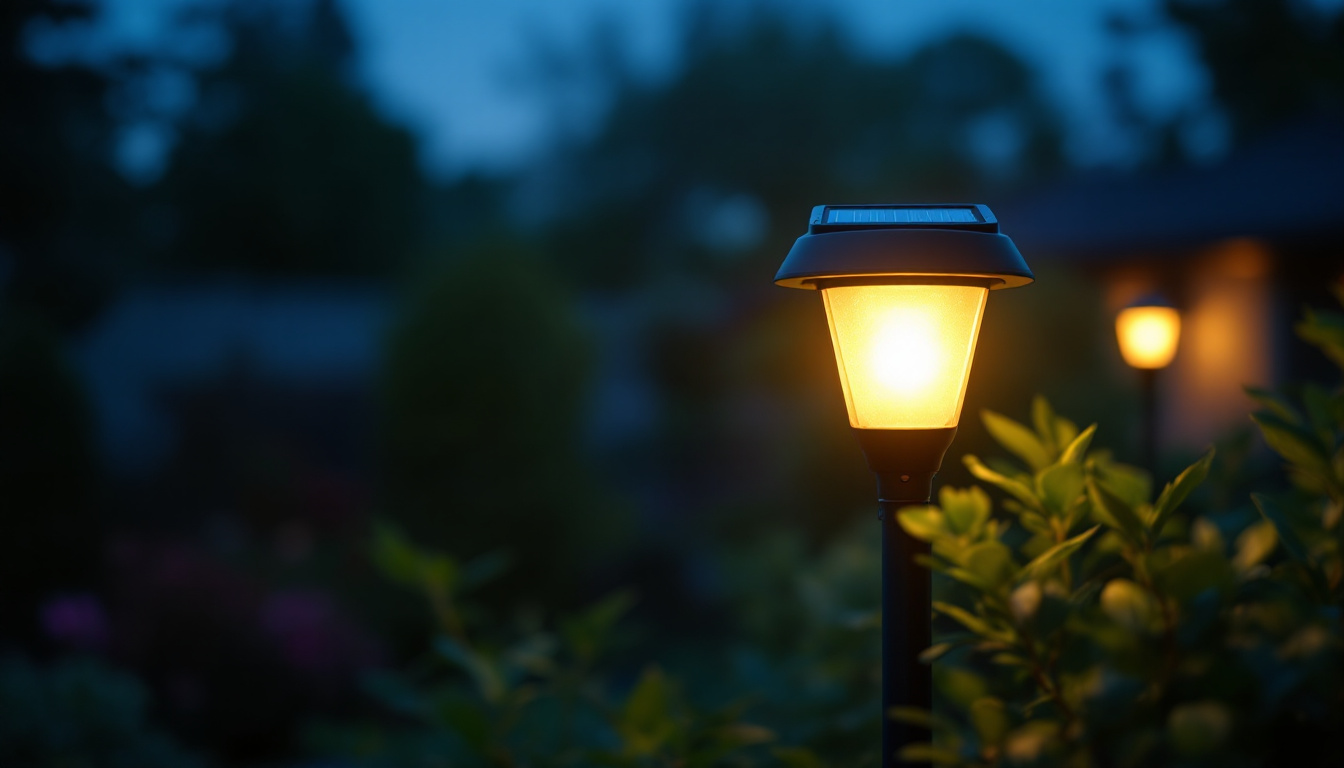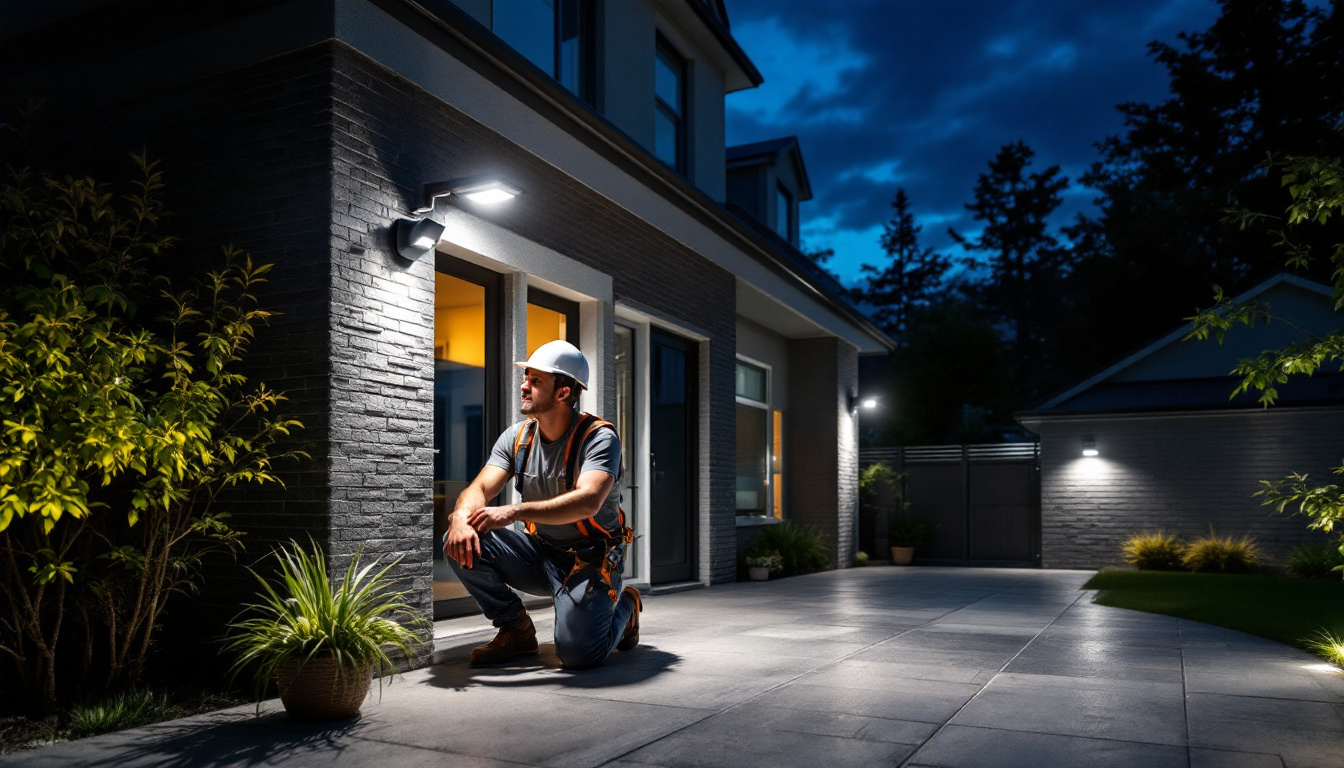
In the ever-evolving landscape of lighting solutions, solar light bulbs have emerged as a popular choice among contractors and homeowners alike. With the increasing emphasis on sustainability and energy efficiency, understanding the advantages and disadvantages of solar light bulbs compared to traditional alternatives is essential for lighting contractors. This article delves into the various aspects of solar light bulbs, their alternatives, and what contractors should consider when making their selections.
Solar light bulbs are designed to harness solar energy, converting it into electricity to power LED lights. These bulbs typically come equipped with solar panels that charge during the day, allowing for illumination at night. This technology not only promotes energy efficiency but also reduces reliance on conventional power sources.
At the core of solar light bulbs is a simple yet effective mechanism. The solar panel collects sunlight during the day, converting it into electrical energy through photovoltaic cells. This energy is then stored in a rechargeable battery, which powers the LED light when the sun sets. Many solar light bulbs also feature sensors that automatically turn the light on at dusk and off at dawn, enhancing convenience and energy savings.
One of the primary advantages of solar light bulbs is their environmental impact. By utilizing renewable energy, these bulbs contribute to reducing carbon footprints and promoting sustainability. Additionally, they can significantly lower electricity costs, making them an attractive option for budget-conscious clients.
Moreover, solar light bulbs are often easy to install, requiring no complex wiring or electrical work. This feature can save contractors time and effort, allowing for quicker project completion. Furthermore, advancements in solar technology have led to improved brightness and battery life, making them a viable option for various applications.
In addition to their practicality, solar light bulbs come in a variety of styles and designs, catering to diverse aesthetic preferences. From sleek modern fixtures to vintage-inspired lanterns, homeowners can choose options that complement their outdoor decor while enjoying the benefits of solar energy. This versatility makes them suitable for various settings, including gardens, pathways, and patios, enhancing both safety and ambiance.
Furthermore, the durability of solar light bulbs is worth noting. Many models are designed to withstand harsh weather conditions, including rain, snow, and extreme temperatures. This resilience ensures that they can provide reliable lighting year-round, making them a smart investment for both residential and commercial properties. As technology continues to evolve, we can expect even more innovative features, such as smart connectivity and customizable lighting options, further enhancing the appeal of solar light bulbs.
While solar light bulbs present numerous benefits, several alternatives exist, each with its own set of advantages and disadvantages. Understanding these options can help lighting contractors make informed decisions tailored to their clients’ needs.
Incandescent bulbs have long been a staple in residential and commercial lighting. These bulbs operate by passing electricity through a filament, which then produces light. While they are inexpensive and widely available, they are highly inefficient, converting only a fraction of energy into light while generating significant heat.
Contractors should note that incandescent bulbs have a shorter lifespan compared to LED and solar options. Additionally, with the global push for energy efficiency, many regions are phasing out incandescent bulbs, making them a less favorable choice for future projects. Their warm, familiar glow may appeal to some homeowners, but the rising costs of electricity and environmental concerns are prompting many to seek more sustainable alternatives.
CFLs offer a more energy-efficient alternative to incandescent bulbs. They consume less electricity and have a longer lifespan, making them a popular choice for many applications. However, CFLs contain small amounts of mercury, which poses environmental concerns during disposal.
Moreover, CFLs can take time to warm up, resulting in slower illumination compared to LEDs and solar options. While they are still a viable choice for some applications, contractors should weigh these factors against the benefits of solar light bulbs. It’s also worth noting that CFLs can be sensitive to temperature fluctuations, which may affect their performance in unconditioned spaces, such as garages or outdoor areas. This limitation can further push contractors to consider solar light bulbs, especially in regions with variable climates.
LEDs have gained immense popularity due to their energy efficiency, longevity, and versatility. They consume significantly less power than both incandescent and CFL bulbs, making them an excellent choice for energy-conscious clients. Additionally, LEDs are available in various colors and designs, allowing for creative lighting solutions.
However, unlike solar light bulbs, LEDs require a constant power source. This dependency can limit their application in outdoor or remote areas where electricity is not readily available. Therefore, contractors must consider the specific needs of their projects when choosing between LEDs and solar light bulbs. Furthermore, the initial investment for LED technology can be higher than that of traditional bulbs, although the long-term savings on energy costs often justify the expense. As technology advances, the price of LEDs continues to decrease, making them an increasingly attractive option for both residential and commercial projects.
Additionally, LEDs are known for their durability and resistance to shock and vibration, which can be particularly beneficial in high-traffic areas or outdoor settings. Their low heat emission also means that they are less likely to pose a fire hazard, making them a safer choice for various applications. As the market evolves, the integration of smart technology into LED systems is becoming more common, allowing for enhanced control over lighting environments through mobile apps and automation, further expanding their appeal to tech-savvy consumers.
When selecting lighting solutions, contractors must evaluate the specific requirements of each project. Factors such as location, budget, and intended use play a crucial role in determining whether solar light bulbs or their alternatives are the best fit.
The geographical location of a project can significantly impact the effectiveness of solar light bulbs. Areas with abundant sunlight will maximize the efficiency and performance of solar lighting. Conversely, regions with frequent cloud cover or limited sunlight may not yield optimal results, making traditional lighting options more suitable.
Additionally, outdoor environments such as parks, gardens, and pathways can benefit greatly from solar light bulbs, as they provide illumination without the need for extensive wiring. In contrast, indoor applications may require more reliable and consistent lighting solutions, such as LEDs or CFLs.
Budget considerations are paramount in any lighting project. While solar light bulbs may have a higher upfront cost, their long-term savings on electricity bills and maintenance can offset this initial investment. Contractors should present clients with a comprehensive cost analysis that includes installation, energy savings, and potential rebates or incentives for using renewable energy solutions.
On the other hand, traditional lighting options like incandescent or CFL bulbs may have lower initial costs but can lead to higher energy bills over time. Evaluating the total cost of ownership is essential for making informed decisions that align with clients’ financial goals.
The intended use of lighting plays a significant role in determining the best solution. For instance, solar light bulbs are ideal for ambient lighting in outdoor spaces, while LEDs may be more suitable for task-oriented lighting in commercial settings. Understanding the specific requirements of each project will help contractors recommend the most appropriate lighting solution.
Aesthetics also matter; clients often seek lighting that complements their design vision. Solar light bulbs come in various styles, making them versatile for different applications. However, contractors should ensure that the chosen lighting solution aligns with the overall design scheme and meets the functional requirements of the space.
The lighting industry is continuously evolving, with new technologies emerging to enhance efficiency and sustainability. Staying informed about these trends can help contractors make better choices for their clients and remain competitive in the market.
Smart lighting technology is gaining traction, allowing users to control their lighting systems remotely through smartphones or home automation systems. This innovation can enhance energy efficiency and provide greater flexibility in managing lighting needs. Contractors should consider integrating smart technology into their lighting designs, whether using solar light bulbs or traditional alternatives.
Many solar light bulbs are now available with smart features, such as motion sensors and adjustable brightness levels, making them even more appealing to environmentally conscious clients. By embracing smart lighting solutions, contractors can offer enhanced functionality and convenience.
As solar technology continues to advance, the efficiency and performance of solar light bulbs are expected to improve significantly. Innovations in battery technology, solar panel efficiency, and LED performance will likely lead to brighter, longer-lasting solar lighting solutions.
Contractors should keep an eye on these developments, as they may influence future project decisions. Clients will increasingly seek out the latest technologies, and being knowledgeable about advancements in solar lighting can set contractors apart from competitors.
In conclusion, the choice between solar light bulbs and their alternatives depends on various factors, including project requirements, budget constraints, and aesthetic considerations. Solar light bulbs offer unique advantages, particularly in terms of sustainability and energy savings, making them an attractive option for many applications.
However, traditional lighting solutions like incandescent, CFL, and LED bulbs also have their place in the market. By understanding the strengths and weaknesses of each option, lighting contractors can provide valuable guidance to their clients, ensuring that they make informed decisions that align with their needs and goals.
Ultimately, the future of lighting lies in embracing innovative technologies and sustainable practices. By staying informed about industry trends and advancements, contractors can position themselves as leaders in the field, ready to meet the evolving demands of their clients.
Ready to make the right choice for your lighting needs? At LumenWholesale, we provide lighting contractors with the highest quality, spec-grade lighting products at unbeatable wholesale prices. Say goodbye to inflated markups and hello to a vast selection of reliable, high-performance lighting options that meet the highest industry standards. With free shipping on bulk orders, you can ensure your projects shine with premium lighting at the best value. Don’t compromise on quality or cost. Explore our collection now and experience the LumenWholesale difference for all your lighting projects.

Discover why solar exterior lighting with motion sensors is revolutionizing the industry.

Discover the key challenges lighting contractors face when installing bathroom vanity lights, from space constraints to achieving the perfect illumination.

Explore how innovative lighting solutions for walkways can enhance energy efficiency, reduce costs, and improve safety.

Discover essential insights into various light bulb types with our comprehensive guide tailored for lighting contractors.